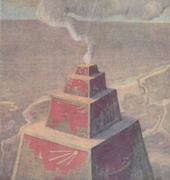The word altar is closely associated with the history of paganism. Literally, the altar is the place where sacrifices were offered. Altars were common in the so-called archaic period ( before formed a developed and paganism Pantheon of gods). Sacrifices the elements that seemed to people the most powerful. As a rule, the most powerful of the elements people thought the one from which depended. It is quite natural that the inhabitants of the Nile, long before he formed the Egyptian paganism, worship of the mighty Nile – it was absolutely his life. When formed, the pantheons of gods and primitive pagan beliefs, altars were built for each of the gods. In Slavic paganism, for example, human sacrifices were offered rarely, however, the altars were used for offerings of sacrifices of animals.

The concept of the altar existed in Greece, in Scandinavia, in fact it existed everywhere, everywhere, where it was common to paganism.
However, oddly enough, the concept of the altar existed in religions in which there was human sacrifice. For example in Buddhism and Shintoism are the burning Ghats, which are used for the burning of the bodies of the deceased (cremation) to ease their souls exit the body.
In Christianity, the altar is called the altar, though it is still more difficult and confusing. Sacrifice in Christianity anoint himself the Savior, he requires no sacrifice. The role of the lamb, given in sacrifice, performed by Jesus Christ, and brought him up as a sacrifice God the Creator. Remember, in the gospel, "For God so loved the world...".
Above the altar in the Christian Church read the Scriptures, there was usually a Cup of wine and proverki for communion. Communion is a symbolic ritual of sacrifice. Jesus bequeathed to us his flesh and blood, blood is wine, flesh is the bread. On the altar of the Church stored the oil for the celebration of Holy mass.
